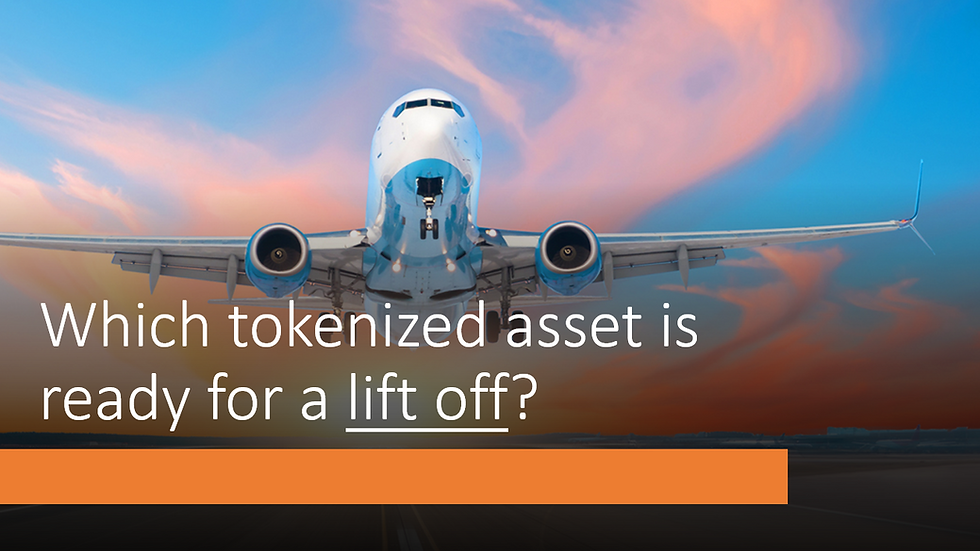Tokenization Explained by Lloyds Banking Group
- Harvey

- Aug 27, 2024
- 3 min read
Updated: Apr 11
Lloyds Banking Group recently published an excellent article on the transformative power of blockchain and tokenization. It was the first time a financial institution put out a paper that non-technical readers can pick up and grasp things intuitively.
I found its social messaging groups and ship containers analogies to be extremely poignant to abstract away complex concepts and get to the core functional differentiations.
To distill the full article into its most important messages, I am going to share three things it said about blockchain and tokenization that you could find very useful in contextualizing the problem-solution space.
And perhaps controversially, the one thing I disagree with Lloyds Banking Group on.
Let's start with the three key takeaways about blockchain & tokenization you should know:
Pain points of current financial system
Today, the financial services industry uses digital databases, also known as ledgers, to store customer records… this allows us to conveniently pay for goods and services, with a simple click or tap of a button from an app. Behind the scenes, however, even standard transactions require multiple systems, messaging layers and third parties to connect, communicate and interact with other participant’s ledgers. It gets more complicated when connecting to different ledgers across borders, or transferring assets.
This perfectly paints the pain points with the current financial system - non-streamlined, non-composable and siloed ledgers require time and resources to function, maintain and upgrade. And the upside of incremental upgrades made to this behemoth plumbing network is limited.
The financial services industry relies on global networks, intermediaries and their own systems. These intermediaries and third parties operate within specific jurisdictions. However, reliance on third parties and their systems can lead to friction, time zone challenges and delays
Enter the blockchain.
Blockchain as a social messaging group
Blockchain technology offers an alternative. Think of it like a social messaging group, where members interact in real time, rather than communicating individually. Each message could represent a transaction, the members as the nodes [keeping transaction records] and the chat history being the financial events. This means every message is transparent and shared by all members, but could also be made private using encryption.

Now imagine siloed financial databases being inside group chats like this. Participants could bring specific currencies; others might bring assets to the group. So rather than eliminate the role of an intermediary, it creates potential for a new role, a “message composer”, that can programme ownership, rules and logic inside transactions. This role would reduce counterparty risks and the dependency on clearing and settlement.
Instead of being displaced, financial institutions will be key transaction composers and recordkeepers in a globally streamlined blockchain system. This is a point that is often lost in the discourse of tokenization. The important players in the existing system are likely to continue their key roles in a tokenized financial world, just with better tools. See the latest example here.
3. Tokenization as standardized ship containers
Imagine tokens as standardised containers on a ship. Each container has fixed dimensions, accommodating anything that fits within those bounds. We could put an array of financial products inside of these “digital” containers… Tokenization would also allow us to pair digital money and assets within a single ecosystem, significantly reducing clearing and settlement times.
Tokenization demystified. Love the way they used the ship container analogy to illustrate the role tokenization plays when it comes to putting assets onchain. It is simply a virtual box that holds data about an asset/customer/transaction.
It is not magic; it is simply computer programming logic. Normal legal and regulatory processes and requirements still apply. In fact, it is only by applying these legal guardrails that tokenized assets have assurance of standing in any legal system.
Lloyds Banking Group did a great job in using these three short punchy to convey the most important fundamental concepts about blockchain and tokenization. However, there is one thing I have gripes about.
Tokenization could bring greater liquidity to markets through tokenising assets that are traditionally more illiquid like insurance, funds or pensions. It would be bolstered by fractional ownership of assets (smaller segments in the form of tokens), to support issuance and ownership transfer with speed, efficiency and transparency.
There is this theory that tokenization brings greater liquidity because it unlocks fractional ownership. That’s all well and good. So I always ask this: if we allow more people to buy expired milk, will more of them buy it?
Liquidity or demand of an asset depends more on its risk/reward attractiveness than whether we can make its ownership into ever smaller units. Want to know why tokenizing illiquid assets are a BAD idea? Read this.
Disclaimer: This content is for informational purposes only, you should not construe any such information or other material as legal, tax, investment, financial, or other advice.





Comments